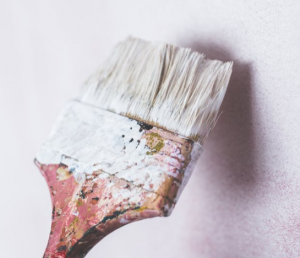 We are bombarded every day by warnings. Computer keyboards come with health warnings, children’s toys are plastered with safety warnings, and it seems like just about everyone wants you to wear gloves, or eye protection, or to consult a physician before use! So, it’s understandable that we might be a little skeptical about the dangers of lead paint. Is it just hype and scaremongering? Or is lead paint really a dangerous issue?
We are bombarded every day by warnings. Computer keyboards come with health warnings, children’s toys are plastered with safety warnings, and it seems like just about everyone wants you to wear gloves, or eye protection, or to consult a physician before use! So, it’s understandable that we might be a little skeptical about the dangers of lead paint. Is it just hype and scaremongering? Or is lead paint really a dangerous issue?
When you have information, you’re equipped to make good decisions, so we have put together some helpful answers to commonly-asked questions about lead paint.
Lead Paint Dangers
Lead really is a poisonous substance, and it can cause serious damage. Lead-based paint is a hazard that needs to be treated with due caution.
When lead enters the digestive system or the lungs, it gradually builds up in the body, causing long-term problems. This is especially dangerous for children and pregnant women, as lead exposure can cause reduced IQ, slower growth and development, hearing problems, anemia, and behavior/attention problems.
How Does Lead Paint Get Into People?
Any time an old layer of lead paint is disturbed, it can release lead into the home environment. This happens when old paint begins to crack or peel. It can also be during renovations, or when the paint is scraped or sanded. Paint chips fall to the floor, and lead dust gets into the air. The main danger is for children, who touch contaminated floors, toys, and other surfaces, and then put their hands in their mouths.
How Do You Know If You Have Lead Paint In Your House?
Lead paint was outlawed in 1978, so any home build prior to that year may have lead-based paint. The only way to know for sure is to have your paint tested for lead. If your home is newer than that, the walls are probably safe, though some older furniture could contain lead.
Can You Just Paint Over Lead-Based Paint?
 If the walls in your house are in very good shape, so that they don’t require any sanding or scraping before new paint is applied, then you can go ahead and paint right over it. There is no hazard in putting fresh paint over the old paint in this way.
If the walls in your house are in very good shape, so that they don’t require any sanding or scraping before new paint is applied, then you can go ahead and paint right over it. There is no hazard in putting fresh paint over the old paint in this way.
Remember that the danger is when the old paint is disturbed in any way. If there will be any drilling, sanding, cutting, scraping, or repairing of the surfaces, this is when the project becomes hazardous. In fact, most states require that such work be done by an EPA-certified contractor. It doesn’t matter whether the lead paint is on drywall, plaster, wood or other materials; the risk is the same.
EPA Certified Lead-safe Contractor for New Jersey and Philadelphia
 If your house, condo or apartment needs painting, and it might have lead paint on it, don’t risk exposing your family to lead poisoning. Consult a professional who has been trained and certified by the EPA to safely handle lead paint.
If your house, condo or apartment needs painting, and it might have lead paint on it, don’t risk exposing your family to lead poisoning. Consult a professional who has been trained and certified by the EPA to safely handle lead paint.
Cherry Hill Painting is an EPA-certified painting contractor, with a lead-safe designation for painting and repairs. We serve New Jersey and the Philadelphia area, including Pennsauken, Camden, Marlton, Tavistock, Laurel Creek, Merchantville and beyond.
Call us today to begin the conversation; you’ll be glad you did!
